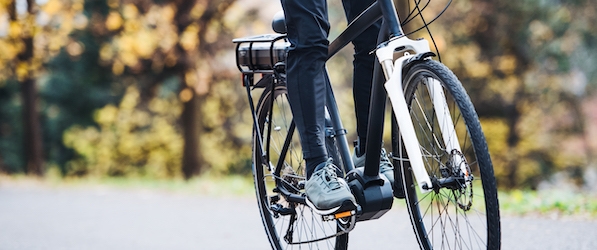An Initial Summary Of E-Bike Regulations And Guidelines In Your City

Writer-Padilla Salomonsen
Before you get on your e-bike and hit the streets, it's critical to understand the regulations and guidelines that govern your city. From speed limits to designated riding areas, there's a lot to take into consideration to guarantee you're compliant and secure. By linked here with the guidelines details to e-bikes, you'll be much better equipped to appreciate your adventures with no unanticipated legal concerns. Keep tuned to find key insights that will certainly aid you browse the e-bike landscape in your city perfectly.
Recognizing E-Bike Category
When it involves browsing the world of e-bike regulations and policies, a crucial beginning factor is understanding the classification system that categorizes these electrical bikes. E-bikes are normally identified right into 3 main groups: Course 1, Class 2, and Class 3.
Course 1 e-bikes are pedal-assist only, indicating they supply help while the cyclist is pedaling and have a maximum speed of 20 mph. These bikes are allowed in locations where typical bicycles are allowed.
Class 2 e-bikes are outfitted with a throttle that can propel the bike without pedaling. They also have a maximum speed of 20 miles per hour and are suitable for bikers that may need help without pedaling continuously.
Course 3 e-bikes are similar to Class 1 however with a higher maximum speed of 28 miles per hour. These bikes are typically restricted from certain bike courses or trails due to their greater speeds.
Comprehending these categories is vital for adhering to regional regulations and ensuring a safe and pleasurable e-biking experience.
Browsing Speed Limits and Limitations
To properly browse e-bike legislations and laws, it's critical to comprehend the rate restrictions and constraints that apply to different classes of electric bikes.
Speed restrictions for e-bikes vary depending upon the classification of the bike. Course 1 e-bikes, which are pedal-assist just and have a maximum speed of 20 miles per hour, are normally allowed on bike lanes and courses.
Class 2 e-bikes, which have a throttle along with pedal-assist and also get to rates of as much as 20 miles per hour, might be limited in particular locations where motorized vehicles aren't allowed.
Class 3 e-bikes, with pedal-assist approximately 28 miles per hour, are typically needed to follow the same guidelines as typical bikes.
It's important to comply with these speed restrictions and limitations to guarantee your security and the security of others when driving. Before riding your e-bike, acquaint on your own with the specific guidelines in your city to avoid any kind of possible fines or lawful issues.
Where to Ride Your E-Bike
To establish where you can ride your e-bike, it's necessary to understand the regulations and guidelines details to your place. In many locations, e-bikes are usually enabled on roads and streets where conventional bikes are permitted. This might include bike lanes, bike courses, and shared streets. However, it's crucial to check regional regulations as some cities may have specific constraints on where e-bikes can be ridden.
When riding your e-bike, always prioritize safety and security by following traffic rules and appreciating pedestrian sidewalks. In addition, be mindful of any type of assigned bike lanes or courses in your location and use them whenever feasible to guarantee a smoother and more secure experience.
Some cities likewise have laws relating to e-bike use on walkways, so ensure to familiarize on your own with these rules to stay clear of any kind of fines or penalties.
Conclusion
Now that you're familiar with the legislations and regulations bordering e-bikes in your city, you can confidently hit the road understanding where you can ride and what limitations relate to your e-bike category. Keep in https://sites.google.com/view/zugobike/ to constantly focus on security and comply with the guidelines to ensure a smooth and lawful adventure. Pleased riding!

